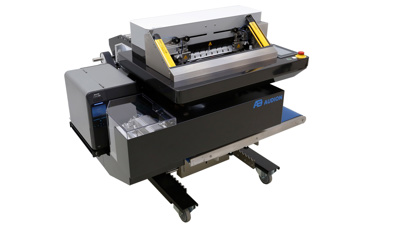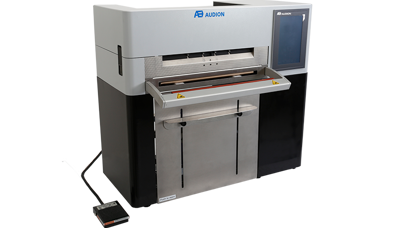Save material costs in E-fulfilment
Secondly, the figures relating to savings in material costs. Cardboard boxes have the highest cost price, followed by shipping envelopes and bags on rolls, which, on average, have a fairly identical price level. Layflat tubing is the packaging solution with by far the lowest costs. But the cost per product is not the big issue here. The problem is bag length selection.
Calculation example
Most film shipping bags are 400 mm wide, 500 mm long, black on the inside, white on the outside and 60 micron thick. On average, you can already save 25% on film by selecting the bag length. Assuming 10,000 orders per day, you arrive at just over 1.5 million metres of film per year. With a saving of 25%, you therefore save 325,000 metres of film! At a price of, for example, 0.24 cents per metre of film (the price is highly dependent on the purchase volume of the film), a saving of
€75,000 per year in material costs can be achieved just like that. The payback period of a machine is therefore short and will of course strongly depend on the number of daily orders.
In addition, the reduction of materials reduces the burden on the environment (production and residual waste). The Audion Packaging Machines sales managers will be happy to work out the calculation with you.
Save on shipping costs in E-fulfilment
Finally, the figures on shipping cost savings within E-fulfilment. The more individual packages that can be transported per individual mode of transport, the lower the shipping costs per item. Flexible packaging takes up less space than cardboard packaging, as no air is transported. Fewer shipping movements result in less environmental impact. In addition, the automatic labelling of packages with the Speedpack Hybrid reduces human error and therefore also the number of returns. The purchase of returns, a hot item in E-fulfilment, also results in fewer shipping movements, lower costs and lower environmental impact.




















